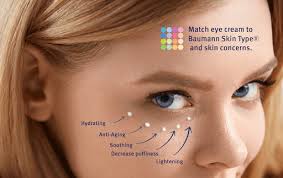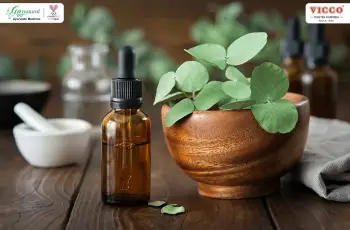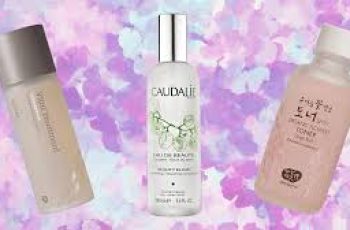
How to Choose the Best Eye Cream for Your Eye Concerns
Choosing the best eye cream begins with understanding your individual concerns, whether that’s puffiness, dark circles, fine lines, or dryness, as each condition requires a different approach.
Eye creams are not one-size-fits-all, and selecting the right formula depends on knowing your skin’s needs and the specific issues you want to treat.
If your main concern is puffiness, look for eye creams with caffeine or anti-inflammatory ingredients to help reduce fluid buildup and constrict blood vessels.
For dark circles, especially those caused by pigmentation or thinning skin, ingredients like vitamin C, niacinamide, or licorice root extract are helpful.
To combat wrinkles and fine lines, seek out eye creams containing peptides, retinol (if tolerated), antioxidants, and growth factors to support collagen production.
Hydrating eye creams, rich in humectants like hyaluronic acid and occlusives such as ceramides, are best for treating dry and dehydrated under-eye areas.
Using the wrong eye cream may aggravate your concerns—hydrating products can worsen puffiness, while harsh actives can cause dryness or irritation.
As a dermatologist, I always advise patients to treat the most sensitive issues first, such as dryness or inflammation, before progressing to antiaging treatments.
When dryness and irritation are under control, antiaging products containing active ingredients like retinol or hydroxy acids can be introduced gradually.
Because the skin around your eyes is delicate and thin, it’s more prone to irritation, so eye products must be chosen carefully based on your skin’s sensitivity.
Many people benefit from using one eye cream in the morning and a different formula at night to address multiple concerns without overwhelming the skin.
In my dermatology clinic in Miami, I often recommend taking the Baumann Skin Type® quiz before choosing an eye cream to ensure a tailored product match.
This quiz helps identify your unique skin type and will recommend medical-grade eye creams and serums best suited to your skin’s characteristics and concerns.
Once you know your skin type, choosing a product becomes simpler—whether you’re looking for luxury skincare, natural options, or affordable medical-grade solutions.
There are five main categories of eye creams to be aware of: antiaging, hydroxyacid, retinol-based, hydrating, and soothing eye creams, each targeting different needs.
Let’s take a closer look at these types to help you decide which product—or combination of products—will work best in your skincare routine.
Antiaging Eye Creams
Antiaging eye creams target wrinkles, crow’s feet, and sagging skin by including peptides, antioxidants, growth factors, and sometimes retinoids for long-term skin renewal.
Some also contain exosomes and heparan sulfate analogs to improve cell communication and repair skin damage, making them highly effective in rejuvenating the eye area.
Retinoids and hydroxy acids are powerful antiaging agents, but they can be irritating, so they’re best used only at night and only after building up skin tolerance.
Peptides and humectants offer a more gentle way to reduce fine lines and puffiness, making them ideal for daily use or for those with sensitive skin types.
A dermatologist-recommended eye cream may combine multiple actives—like vitamin C, hyaluronic acid, caffeine, and botanical extracts—to target aging and dullness.
Look for ingredients such as Tetrapeptide-21 or Palmitoyl Tripeptide-1 Acetate to firm skin and reduce the appearance of fine lines in a non-irritating formulation.
Ferments like Saccharide Isomerate can balance the skin microbiome and provide antiaging effects while soothing irritated or inflamed eye-area skin.
Vitamin C derivatives such as Tetrahexyldecyl Ascorbate and Ascorbyl Palmitate help brighten under-eye darkness and support collagen production.
Caffeine is a great de-puffing agent and also acts as an antioxidant, reducing oxidative stress in the thin skin around your eyes.
Bisabolol, hyaluronic acid, licorice extract (glycyrrhetinic acid), and phytosterols support barrier repair and hydration, which are crucial for aging or dry skin.
Some antiaging eye creams are formulated without retinol or acids, making them ideal for those with sensitive eyes or a history of skin reactions.
In your 30s, eye creams should focus on preventing early signs of aging and protecting from environmental stressors like pollution and screen light.
SkinCeuticals A.G.E. Eye Complex is a popular option, combining antioxidants, peptides, and optical diffusers to minimize fine lines, puffiness, and dullness.
In your 40s, look for creams with growth factors, like Neocutis LUMIERE FIRM, which help restore lost collagen and visibly firm the skin over time.
For patients with pronounced crow’s feet, I frequently recommend this cream in my practice due to its firming, brightening, and antiaging benefits.
In your 50s, menopausal skin may benefit from formulas that mimic estrogen, such as Methyl Estradiolpropanoate, which helps restore lost volume and elasticity.
For men in their 50s, a great option is Plated SkinScience Intense Serum, which was developed by a male doctor and effectively firms both upper and lower eyelids.
This serum is light, non-greasy, and fragrance-free, making it a favorite among male patients who want results without a heavily perfumed or oily feel.
Hydroxyacid Eye Creams
Hydroxyacids like glycolic acid can improve skin texture and reduce wrinkles but may cause irritation in sensitive or dry skin, especially in the delicate eye area.
Only resistant skin types with no redness or sensitivity should use hydroxyacid-based products, and they should be introduced slowly to monitor reactions.
While effective, I often recommend retinol over hydroxyacids around the eyes for long-term antiaging benefits, especially in patients with sensitive skin.
Retinol Eye Serums
Retinol is a gold-standard antiaging ingredient, but it must be used carefully—only at night and not too close to the lash line, as it may migrate and irritate eyes.
Always follow dermatologist-approved retinol usage instructions to avoid flaking, dryness, or redness in the under-eye or upper eyelid area.
Hydrating Eye Creams
Dry, dehydrated skin under the eyes benefits most from rich hydrating creams that use humectants like hyaluronic acid and occlusive agents like ceramides.
Unlike eye serums, hydrating eye creams have a thicker texture that seals in moisture and visibly plumps up fine lines caused by dehydration.
For extremely dry or flaky eyelid skin, choose a barrier-repairing eye cream over a serum for long-lasting hydration and skin protection.
Sunscreen for the Eye Area
The skin on your eyelids is among the thinnest on your body and highly vulnerable to sun damage—applying SPF daily can help prevent wrinkles and sagging.
Choose mineral sunscreens designed for sensitive areas or opt for SPF-infused eye creams to streamline your morning routine while protecting delicate eye skin.
Eye Cream vs Eye Serum
Eye creams are thicker, more hydrating, and often better for dry or mature skin, while serums are lighter, gel-based, and ideal for oily or puff-prone skin types.
If you have sensitive or easily irritated skin, avoid layering an eye serum and cream at the same time, as this can dilute active ingredients and reduce effectiveness.
Use one in the morning and another at night if you wish to combine them—for example, a soothing serum during the day and a retinol cream at night.
What to Avoid in Eye Creams
If your eyes sting or water after applying skincare, avoid ingredients like witch hazel, ascorbic acid, retinol, avobenzone, and essential oils, which can trigger irritation.
Fragrance—both natural and synthetic—is a common irritant in eye products, especially in those with rosacea, eczema, or highly reactive skin types.
If you’re just beginning a retinol routine, delay introducing eye creams with retinoids or acids until your skin builds up tolerance to avoid overexposure.
Fragrance-Free Eye Creams
Fragrance-free eye creams are less likely to cause allergic reactions, redness, or watery eyes, making them ideal for sensitive skin and daily use around the eye area.
Avoiding Chemical Sunscreens
Chemical sunscreens like avobenzone can burn or sting your eyes, especially when sweating—opt for physical sunblocks or products that avoid avobenzone altogether.
Best Eye Creams for Beginners
If you’re new to using eye creams, start with gentle formulas free of fragrances, dyes, strong actives, or preservatives and gradually work up to more potent options.
Morning vs Night Eye Creams
Use brightening, soothing, or de-puffing formulas in the morning under concealer, and reserve richer or retinol-containing products for your nighttime skincare.
Eye Creams Under Makeup
If you wear makeup, look for eye creams or serums with humectants like glycerin, hyaluronic acid, or honey that double as primers to prevent creasing and caking.
Eye Creams to Use Before Retinol
Apply a hydrating eye cream before your nighttime retinoid to protect the delicate eye area from irritation and reduce transference from your pillow to your eyelids.
Find Your Perfect Eye Cream
Your best eye cream depends on your skin type, age, and concerns—take the Baumann Skin Type® quiz to match with dermatologist-approved products tailored to you.


